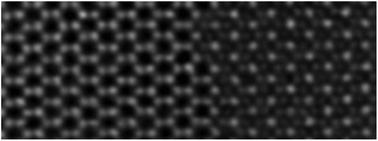Atomically sharp interlayer stacking shifts at anti-phase grain boundaries in overlapping MoS2 secondary layers†
Abstract
When secondary domains nucleate and grow on the surface of monolayer MoS2, they can extend across grain boundaries in the underlying monolayer MoS2 and form overlapping sections. We present an atomic level study of overlapping antiphase grain boundaries (GBs) in MoS2 monolayer-bilayers using aberration-corrected annular dark field scanning transmission electron microscopy. In particular we focus on the antiphase GB within a monolayer and track its propagation through an overlapping bilayer domain. We show that this leads to an atomically sharp interface between 2H and 3R interlayer stacking in the bilayer region. We have studied the micro-nanoscale “meandering” of the antiphase GB in MoS2, which shows a directional dependence on the density of 4 and 8 member ring defects, as well as sharp turning angles 90°–100° that are mediated by a special 8-member ring defect. Density functional theory has been used to explore the overlapping interlayer stacking around the antiphase GBs, confirming our experimental findings. These results show that overlapping secondary bilayer MoS2 domains cause atomic structure modification to underlying anti-phase GB sites to accommodate the van der Waals interactions.



 Please wait while we load your content...
Please wait while we load your content...